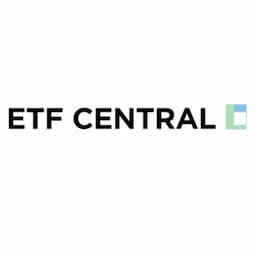The ETF industry is dominated by the “Big Three”: BlackRock (NYSE:BLK), Vanguard, and State Street (NYSE:STT), collectively housing greater than $20 trillion of assets under management (AUM) as of their latest annual reports.
While BlackRock has historically been the leader in the U.S. ETF market, Vanguard has been picking up increased market share within the ETF space – owing to their strategy of focusing on offering low-cost products aimed at the retail investor.
While Vanguard has been in a state of seemingly perpetual growth, the ETF market clearly can’t keep rapidly expanding indefinitely. Therefore, ETF providers must look for ways to right-size their portfolios and maintain profitability while simultaneously meeting demand from investors.
Vanguard closing a US-listed ETF for the first time ever
In a late-September press release, Vanguard announced that it would be liquidating the $44.2 million Vanguard U.S. Liquidity Factor ETF (VFLQ). VFLQ was a very small fund and ultimately inconsequential in the grander scheme of Vanguard’s massive suite of ETF offerings, however, it is notable given that Vanguard has never liquidated a US-listed fund in its 21-year history in the ETF space.
The ETF in question
Turning back to the fund closure, VFLQ was a rules-based quantitative ETF which systematically invested in U.S. stocks with lower measures of trading liquidity across different sizes (small, mid, and large caps) and different sectors. It was brought to market in February 2018 and maintained a relatively low expense ratio of 0.13%.
This ETF was likely aimed at providing investors exposure to stocks that traded at a “liquidity discount,” that is, that thinly traded stocks would trade at a discount to their intrinsic value because of the fact that they are illiquid. While this investment idea does have merit, it likely did not gain as much traction as was expected by Vanguard as the manager mentioned that the fund “has not gained scale since its 2018 debut”.
In the press release Vanguard notes that it is reviewing its global product lineup and ensuring that each fund and ETF is meeting the needs of clients.
Shaking up their portfolio
Vanguard had been holding steady with its roster of fund offerings given that it had not launched a new fund in 20 months prior to the announcement of plans to launch a new Vanguard Short-Term Tax-Exempt Bond ETF (VTES) in the first quarter of 2023. To learn more, please see ETF Central writer Tony Dong’s article on Vanguard’s plans to launch this new ETF and its potential suitability for investors.
Clearly, Vanguard is shaking up its portfolio with this first U.S. closure and also its first new launch in 20 months – we think this could be sending a signal to the broader ETF market.
Implication for the market
Fund closures are natural, especially for ETF providers with the size of BlackRock or Vanguard, there are bound to be some products that aren’t as successful. It’s simply good business sense to axe products that aren’t working, especially in a sustained bear market as we witnessed in 2022. The fact that Vanguard had not closed an ETF until now is a grand feat in itself.
However, in our view, this points to a potential evolution in the industry lifecycle of ETFs as they move from a pure-growth phase to more of a selective growth stage of life.
Historically, ETF inflows were so large that providers could continue launching new ETFs and the overall pie was growing fast enough that every player was getting a bigger slice. While the ETF segment is still growing, amid challenging market conditions in 2022 it follows that providers could look to right-size their portfolios in order to maintain profitability.
In a bull market, investors have more investable capital, and the ETF market can continue to launch new products with a high probability of success. Now that we’ve moved into a bear market, it stands to reason that not all products will be successful.
Bottom line
Overall, this could be positive for investors as instead of receiving a bombardment of new investment alternatives, providers can focus on optimizing costs and bringing higher-quality products to market in order to meet client needs.
***
This content was originally published by our partners at ETF Central.
